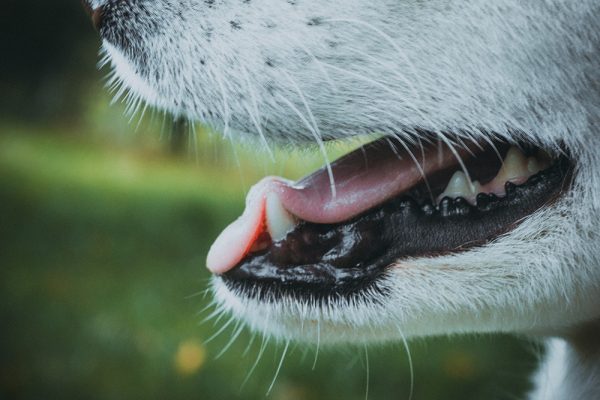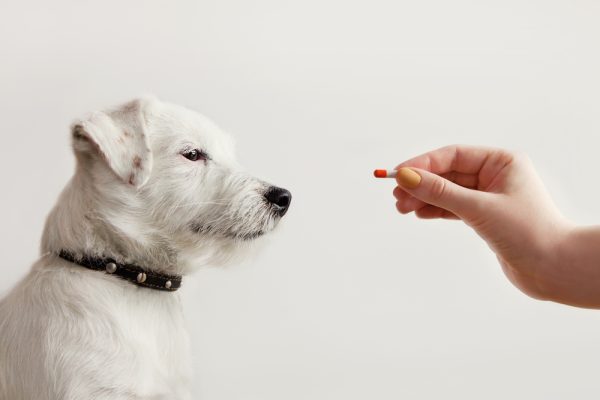In this article
Are your French Bulldog’s ears always dirty and smelly? Does your dog scratch their ears often? If this sounds familiar, chances are that your four-legged friend is suffering from an ear infection.
Dogs with ear infections tend to shake their heads and scratch their ears excessively. You might also see your dog rubbing their face against the floor or furniture or keeping their head down. If you look into your dog’s ears, you will usually see redness and inflammation. In some cases, the ears will have brown, foul-smelling deposits. When touched, your dog’s ears will be warmer than usual and sometimes painful (your dog will not allow you to handle their ears).
The causes of ear infections are varied, so a consultation with the vet is vital. Postponing the treatment can lead to unnecessary pain and complications, such as chronic infections, othematoma (ear hematoma), balance problems, and even hearing impairment and neurological issues.

What Is an Ear Infection?
The ear is one of the organs of perception, being responsible for one of the most important senses: hearing. It has three anatomical portions that are interesting to look at in order to understand the implications of an ear infection.
The outermost part of the ear is the external or outer ear and consists of the ear flap (or pinna) and the ear canal, which ends in a thin layer called eardrum or tympanic membrane, part of the middle ear together with the tympanic cavity and three tiny bones that transmit sound waves to the inner ear, and the eustachian tube. The internal or inner ear includes the cochlea (the organ of hearing) and the vestibular system (the organ of balance)
Otitis refers to the inflammation or infection of part of the ear. It usually affects the external ear, and it’s called otitis externa. Less often, it affects the middle or internal ear, being called otitis media or otitis interna. Otitis can be acute or chronic and affect one ear (unilateral) or both ears (bilateral).
The French bulldog is a brachycephalic breed, which means they have nearly equal longitudinal and transverse skull diameters. These breeds show anatomical changes in the ear canal, which make it narrower than in most other breeds. For this reason, otoscopic examination is usually difficult or even impossible in some cases.
Brachycephalic breeds are more prone to otitis externa and media1. Otitis is one of the most frequent disorders recorded in French bulldogs. Studies also show2 that French bulldogs have a higher chance of otitis externa than crossbreeds. In other words, ear infections in French bulldogs are common and mostly due to their extreme anatomy leading to narrowing of the ear canal.

What Are the Signs of Ear Infections?
Dogs with otitis are typically easy to spot. They will present specific clinical signs that include:
- Ear discharge, sometimes even pus
- Pain to the touch the ear or area around it
- Redness of the ear flap
- Head shaking
- Excessive ear scratching
- Bad smell
- Head tilt
- Yelping when the area is touched or they shake
- Refusal to eat
- Lethargy
- Circling when otitis interna develops
Dogs with otitis will shake their heads repeatedly and scratch the affected ear. If the pain is severe, your dog will not let you touch their ear and may even become aggressive. Sometimes your dog will sneeze, have a runny nose, and tilt their head to one side. In other cases, your pet may exhibit repetitive movements of the eyes, from right to left. They may even appear disoriented.
Otitis can lead to severe complications if it is left untreated.
When it comes to understanding the symptoms, verifying a diagnosis, and planning for prevention for your pet, the advice of a licensed veterinarian can be helpful.
If you need to speak with a vet but can't get to one, head over to PangoVet. It's an online service where you can talk to a vet online and get the personalized advice you need for your pet — all at an affordable price!
Ear Infections Complications
Repeated and/or chronic ear infections can cause damage to the ear flap as the dog scratches and shakes the affected ear. As a result, the blood vessels inside can break and the blood accumulates between the skin and cartilage causing an otohematoma.
In some cases, untreated or chronic ear infections can cause the ear canal to thicken and even become blocked. If the condition is left untreated, the external infection can lead to otitis media or interna and later, to neurological problems. An untreated ear infection can also permanently affect balance and lead to deafness.

What Are the Causes of Ear Infections?
The anatomical conformation of dogs’ ears favors an environment with high humidity and temperature where otitis can develop, as the auditory canal is long and “L” shaped. The causes are normally classified into primary, secondary, and perpetuating factors of ear canal inflammation. In most cases, otitis develops as a result of more than one cause or factor. Here there is a list of common factors that contribute to ear infections.
- Breed anatomy: Brachycephalic dogs and those with floppy ears are more prone to ear infections because the shape of their ears promotes reduced air flow and increased humidity in the ear canal.
- Parasites: Ear mites cause itchy infections. They are more common in puppies than adult dogs.
- Foreign bodies: They can even perforate the eardrum and cause loss of hearing.
- Allergies: These occur when your dog’s immune system overreacts to the presence of a certain substance called allergen. Allergies to food, dust mites, molds, and pollen are common and can lead to allergic skin disease and otitis. In addition, it increases the risk of bacterial or fungal infection.
- Excessive hair growth inside the ear canal: The moisture maintained by the hair can create a favorable environment for the development of bacteria and the appearance of infections.
- Inadequate cleaning of your dog’s ears: Overcleaning can cause irritation, but poor cleaning can lead to excessive buildup; both lead to bacteria growth.
- Fungi and bacteria: The growth is usually favored in environments with increased moisture and temperature.
- Tumor: A tumor in the ear canal can narrow it and favor the development of microorganisms.

How Do I Care for a French Bulldog With an Ear Infection?
You are probably wondering what medicines you can give your dog when they have otitis. Without knowing the specific type of problem present, however, it is not possible to know which medicine to use. In most cases, there will be a yeast or a bacterial infection; however, sometimes the problem starts off just with inflammation. Yeast, ear mites, and several types of bacteria can cause ear infections. Sometimes, the problem involves a foreign body, a polyp, or a tumor, and in these situations, the treatment is more complex than just applying ear drops.
It is crucial for your dog to be examined by a vet to ensure that their eardrum is intact (infections can perforate the eardrum). Certain medications can lead to hearing loss if the eardrum is perforated. The vet will collect a sample from the auricular secretion to determine the pathogen causing the infection.
Your dog’s evaluation will include identifying the underlying disease if applicable. Many dogs with certain diseases (e.g., allergies or hypothyroidism) also have chronic or recurrent ear infections. If the vet suspects an underlying disease, they must diagnose and treat it. Otherwise, your pet will continue to have chronic ear problems.
In extreme cases, chronic ear infections in French Bulldogs must be treated with surgery. This procedure changes the shape of the ear to reduce the risk of recurrent infections. Luckily, this method is not always necessary, and, if possible, both oral and topical medication are prescribed to generally treat ear infections with medication. The treatment includes cleaning the ears and applying ear drops (antibiotics, antiparasitics, or antifungals). In cases where the infection is generalized, the vet may prescribe general antibiotics, recommend that you bathe your dog with special shampoo, etc

How to Apply Ear Drops
Applying drops in your dog’s ears is not complicated when you know how. Here’s what you have to do:
- Lift your dog’s ear flap slightly.
- Apply a small amount of medicine to the entrance of the ear canal as directed by your vet.
- Hold up their ear flap for a few seconds.
- Gently massage the base of the ear between your thumb and forefinger so the solution is distributed through the ear canal.
- Following your vet’s instructions, you can sometimes gently wipe off the excess product on the outer ear with a cotton ball. Sometimes, the product shouldn’t be wiped off.

Frequently Asked Questions (FAQs)
How Do I Know if My Dog’s Ear Infection Is Serious?
Ear infections should always be taken seriously. When the ear infection is advanced, you will notice the following clinical signs: excessive scratching, shaking of the head, and yelping, along with a bad smell and dark discharge. Take your dog to the vet as soon as you notice one or more of these signs because ear infections can lead to severe complications.

Why Does My French Bulldog Keep Getting Ear Infections?
French Bulldogs can develop ear infections as early as a few weeks old. This might be caused by ear mites or other causes. This breed is also more prone to skin allergies and endocrine disorders (hypothyroidism or Cushing’s disease), which can also predispose to ear infections. Take your dog to a specialist if they frequently develop ear infections.

Conclusion
Ear infections in French Bulldogs are common. Due to the anatomical shape of their head and narrow auditory canals, this breed can develop otitis from an early age. However, otitis is usually multifactorial, and besides their anatomy, other causes include skin allergies, parasites, or foreign bodies. The clinical signs are specific, and you should take your dog to the vet as soon as you notice them to avoid further complications.
See Also:
- Why Does a French Bulldog Get Skin Lumps? Our Vet Explains
- Bulldog Tail Pocket Infection: Vet-Approved Prevention & Care Guide
Featured Image Credit:135pixels, Shutterstock





















